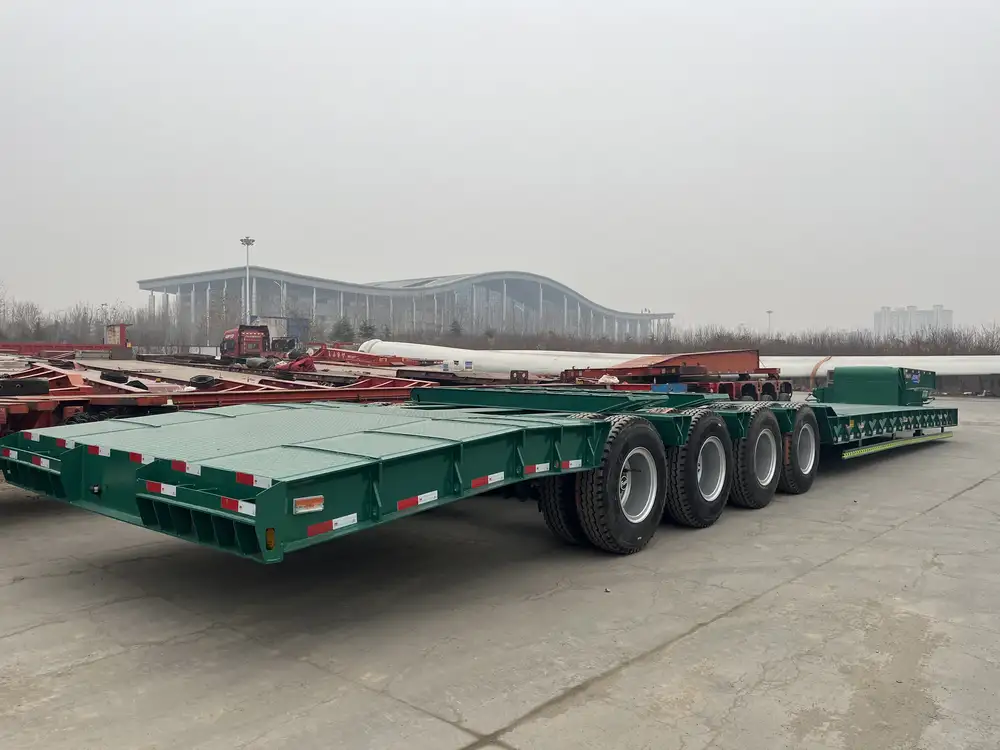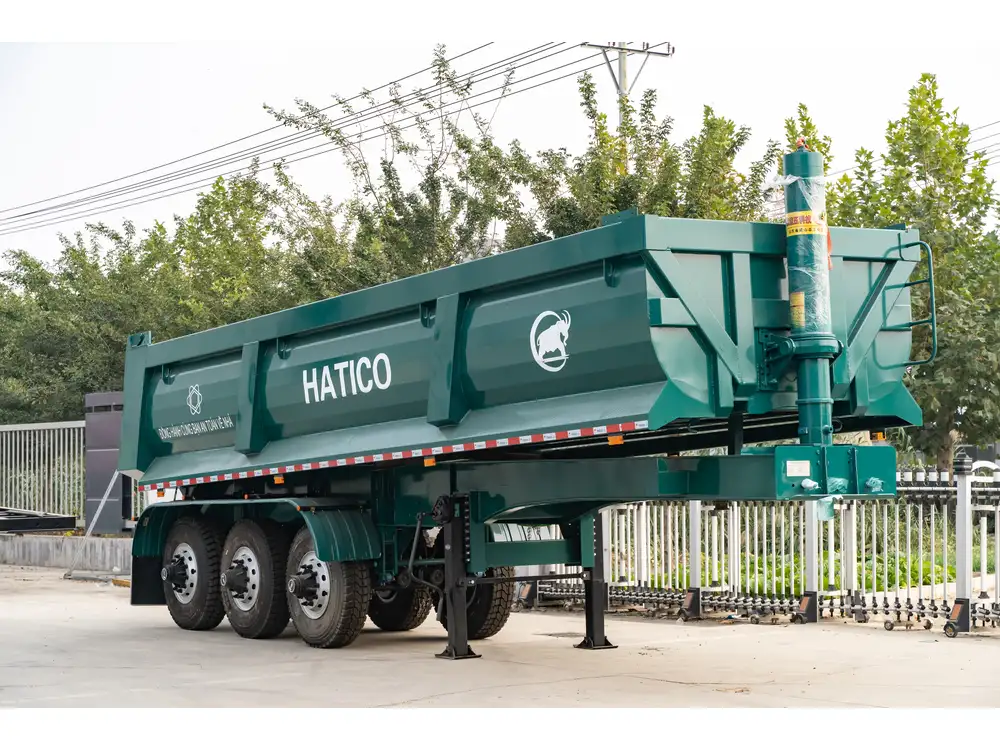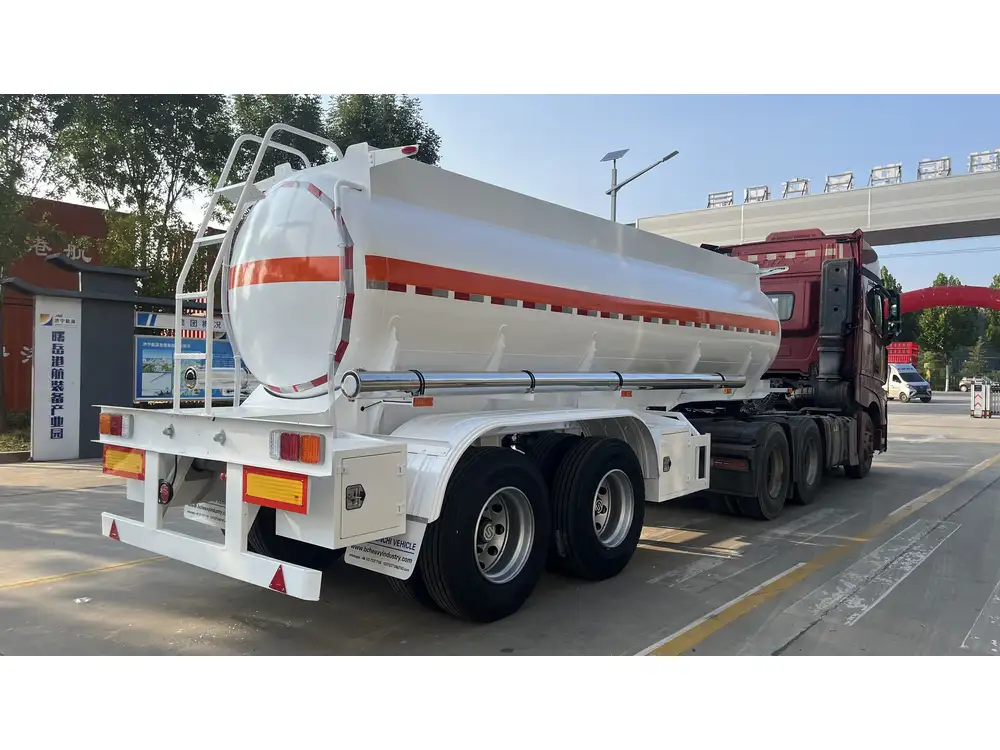In the realm of semi-trailer manufacturing, few types are as versatile and widely utilized as dump trailers. Understanding the electrical requirements for a dump trailer is crucial, as it directly influences operational efficiency, safety, and overall performance. In this comprehensive guide, we delve deeply into the electrical systems that power dump trailers, ensuring manufacturers and operators alike can navigate this complex terrain effectively.
Key Electrical Components of Dump Trailers
Dump trailers are engineered with a host of electrical components that work in unison to ensure smooth operation. Let’s explore the primary elements:
| Component | Description |
|---|---|
| Battery | Provides the necessary power to the hydraulic system and lights. |
| Hydraulic Pump | Converts electrical energy into hydraulic energy, facilitating dumping. |
| Control Switch | A signal device that activates the hydraulic pump to lift the trailer. |
| Electronic Brake Controller | Manages the brake system, ensuring smooth deceleration during operation. |
| Wiring Harness | Connects all electrical components, safeguarding against damage. |
| Lights | Essential for visibility and safety during nighttime operations. |
Diagram: Basic Electrical Circuit of a Dump Trailer
+-------------------+
| Battery |
| |
| +------------+ |
| | Hydraulic | | -----> Hydraulic Pump
| | Control | |
| | Switch | |
| +------------+ |
+-------------------+
+-----------+ | +---------+
| Lights | | | ECBC | <--- Electronic Brake Controller
+-----------+ | +---------+
| Wiring Harness |
+----------------+
Battery Power and Specifications
The backbone of any dump trailer’s electrical system is its battery. A robust and reliable battery is imperative for efficacy. Below are the typical battery specifications:
- Voltage: Most dump trailers operate on a 12V system, but 24V systems are favored for heavier-duty applications.
- Capacity: Battery capacity ranges from 100 to 200Ah, depending on the operational demands.
- Type: Lead-acid batteries are common, while lithium-ion batteries are increasingly popular due to their lighter weight and longer lifespan.
Selecting the Right Battery
When choosing a battery for a dump trailer, consider the following factors:
- Load Requirements: Calculate the total load of all electrical devices.
- Runtime Needs: Determine how long the system needs to operate without recharging.
- Temperature Tolerance: Opt for batteries designed to perform well in varied temperatures.
Hydraulic Systems: Function and Power

Role of the Hydraulic Pump
The hydraulic pump is pivotal in enabling the dump trailer’s dumping capacity. While primarily powered by electricity, understanding its mechanics is essential for proper maintenance and operation.
Power Supply to Hydraulic Pumps
- Voltage Rating: Ensure the hydraulic pump matches the battery voltage (12V or 24V).
- Fuse Rating: Use appropriately rated fuses, typically in the 20-30A range, to prevent electrical surges.
Control Mechanisms
Dump trailers employ control switches to manage the hydraulic system. Operators must be aware of the following switch types:
- Toggle Switches: Standard for manual operation.
- Momentary Switches: Allow for temporary activation during dumping.

Wiring and Connectors
The integrity of the wiring harness is paramount. Neglect can lead to electrical failures and safety hazards. Key considerations include:
- Wire Gauge: Use thicker wires (such as 10-12 AWG) for high current applications.
- Connector Types: Ensure terminal connections are secure, employing waterproof connectors where necessary.
Electronic Brake Controller (EBC)
The Electronic Brake Controller is a sophisticated device that governs the trailer’s braking system. Its correct installation and calibration significantly enhance safety and control while towing.
EBC Installation
Proper EBC installation includes:
- Positioning: Mount the controller within easy reach of the vehicle’s driver.
- Wiring: Ensure connections are secure and labeled for easy troubleshooting.

EBC Functionality
Key functions of an EBC include:
- Proportional Braking: Adjusts braking force based on vehicle speed.
- User Settings: Allows customization according to load and conditions.
Lighting Systems
Lights are critical for operational safety. Trailer lighting typically consists of:
| Light Type | Functionality |
|---|---|
| Tail Lights | Indicate trailer presence and width. |
| Brake Lights | Alert following vehicles during deceleration. |
| Turn Signal Lights | Notify drivers of intended turns. |
| Exterior Work Lights | Provide illumination for loading/unloading in low-light conditions. |
Electrical Requirements for Lights
- Voltage Rating: Ensure lighting systems comply with the chosen voltage rated for battery (12V or 24V).
- Fuses: Appropriate fuse ratings (usually 5-15A) protect the lighting circuit.

Maintenance Tips for Electrical Systems
Regular maintenance of electrical systems cannot be overstated. Here are proposed activities to sustain system integrity:
- Electrical Inspections: Conduct routine checks of all wiring, connectors, and components for wear.
- Battery Maintenance: Clean terminals, check for corrosion, and ensure proper water levels.
- Hydraulic Fluid Checks: Maintaining appropriate fluid levels prevents pump strain and overheating.
- Loader Calibration: Realign the control switch with the hydraulic system to ensure correct functionality.
Troubleshooting Common Issues
Despite the best maintenance practices, issues can still arise. Here are some common problems and their solutions:
| Problem | Potential Cause | Solution |
|---|---|---|
| Trailer Won’t Lift | Battery failure | Test battery voltage and replace as necessary. |
| Lights Not Functioning | Corroded wiring connections | Inspect and clean all connections. |
| EBC Brakes Not Engaging | Misconfiguration or faulty EBC | Re-calibrate or replace the EBC. |
Importance of Compliance with Electrical Standards
All electrical systems are subject to specific regulations. Adhering to these standards ensures not only safety but also the longevity of vehicles. Manufacturers should consider:
- SAE Standards: Ensure all components comply with Society of Automotive Engineers standards.
- ISO Certification: Adherence to International Organization for Standardization specifications promotes global compatibility.

Conclusion
In the multifaceted world of dump trailers, understanding electrical requirements is paramount. With careful consideration of battery specifications, hydraulic systems, electronic brake controllers, and lighting installations, manufacturers can produce trailers that not only perform efficiently but also guarantee safety. By maintaining a proactive approach to maintenance and adhering to electrical standards, operators can maximize productivity and lifespan, significantly enhancing their return on investment.
FAQs
1. What type of battery is best for dump trailers?
Choosing a high-capacity lead-acid battery or lithium-ion battery, depending on usage, can ensure sufficient power.
2. How often should I inspect electrical systems?
Regular quarterly inspections, paired with any pre-trip checks, can help maintain optimal functionality.
3. Why are electronic brake controllers necessary?
EBCs enhance vehicle control and safety, adapting braking performance based on load and conditions.
4. Can I upgrade the electrical system for better performance?
Yes, upgrading components such as the battery or hydraulic pump can improve efficiency and operation.
5. Should I consider weatherproofing my electrical connections?
Absolutely; using weatherproof connectors and sealing can prevent moisture intrusion and corrosion, prolonging system life.
By understanding these intricacies and addressing the common concerns regarding dump trailer electrical systems, readers can confidently approach their operational needs, ensuring they remain one step ahead in a competitive landscape.



